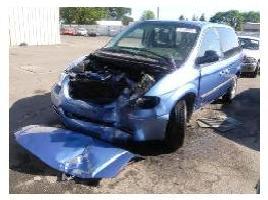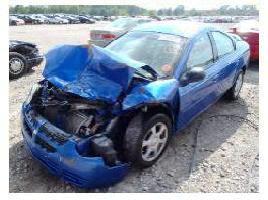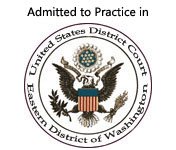Ask an Attorney a Question for FREE!
Bodily Injury Claims and Prior Injuries
Claim adjusters will be looking at your medical records to find injuries so they can deduct damages from your settlement
Prior injuries can complicate a bodily injury claim. In theory, the person that hit you has to pay for all damages he caused you, including any aggravation of a prior injury, even if it is not related to the accident.

Prior injuries are problematic in a settlement negotiation when you still had health problems prior to the accident. In other words, for prior injuries to be an issue to be discussed in court, the injury must be “active.”
If you were 100% recovered from your prior injury, then you were “as good as new.” There would be no need to establish your prior health condition.
If you have prior injuries before the current car accident, then the adjuster must determine two things - the state of your health right before the accident and the state of your health after the impact. They would have to pay you the difference.
For example, if your health was at X level, and the accident caused Y pain, then you would not be entitled to X + Y and only to Y. In many car accidents, prior injuries are not an issue at all.
If you had a broken foot, and the accident gave you a broken arm, the two injuries are independent of each other.
Sure, you would be in a worse position with an arm and a leg broken at the same time. However, one injury does not necessarily make the other better or worse.

On the other hand, if you had surgery for a herniated disc and you are rear-ended, then the impact would increase the damage to your already injured back.
When considering factors that worsen a condition, prior injuries and medical histories will become “an open book” for adjusters.
Determining someone’s medical condition before and after an accident can become an expensive legal battle among medical experts. Only the jury can decide how much the accident worsened your pain and overall health.
If you are not going to court (settling your case directly), and you are dealing with a “prior injuries” claim, then you need to convince the adjuster that you were healed almost to the 100% recovery point prior to the accident.
You will also have to show that because of the accident, the injury will take more time to recover back to the exact point your condition was before.
They would not owe you for the entire injury (all of your pain relating back to the first injury). The responsible party did not cause the original condition, but only aggravated it. They would only owe for that aggravation.

How much do they owe? That is where the dispute will be. Adjusters will review your past medical history in hopes of finding documentation showing that your condition was not a very good one. They further use these records to show that the accident had little or no impact on your injury.
Your job will be to defeat these types of arguments by showing that you were almost healed, but because of the accident, the recovery will be much longer and more painful.
The insurance company would owe you for your recovery. However, the recovery does not have to be at 100%, but until you are at the same position you were in before the accident.
Get a great Bodily Injury E-book for more key information.
One thing is clear, if you hit someone and worsened his prior injury and that same impact would cause little or no injury to a “normal” person, then your insurance will have to pay the higher rate. In other words, you must pay for your “victim” as you find him.
This is often perceived as unfair practice. You touched someone, and now you have to pay high medical bills and pain and suffering, which you would not have to pay if that person was healthy to begin with.
Although this is a persuasive argument, courts have been clear about allowing this type of recovery.

The objective of tort law and remedies is to put the wronged party back in the position they were in prior the accident. Perhaps courts are trying to encourage drivers to pay attention and this is one more way to achieve that.
Read more about bodily injuries and soft tissue injuries.
If you’ve been injured and do not know what to do next, a local personal injury attorney can answer your questions and help you decide what to do. Insurance claims can be complicated, and insurance companies do not always advocate for you. Fill out the form below to talk with a personal injury lawyer near you.
Insurance companies are not on your side. You should either get this personal injury eBook or talk to a personal injury attorney before you make any decisions!
|
|
Follow the links below for more information about accident injuries, bodily injury claims, and what to ask when making this type of claim.
1. Who can make a bodily injury claim
2. Reserving your bodily injury claim
3. Soft Tissue Claim Part I
4. Permanent Injury Claim
5. Medical bills, medicine, expenses
6. Loss of Wages
7. Loss of Earning Capacity
8. Loss of Business Income
9. Loss of Consortium
10. Loss of Quality of Life
11. Loss of Essential Services
12. Future Treatment and Expenses
13. Pain and Suffering
14. Prior Injuries
15. Psychological Injuries
16. Personal Injury Claim Settlement (evaluation of a claim)
17. Car Accident Injury Claim and Burden of Proof
18. What affects compensation for back and other injury claims
19. A word about Head Injuries
Making a Personal Injury Claim: Steps 1 to 5
Making a Personal Injury Claim: Steps 6 to 10
Pain and Suffering Reimbursement
Damages Calculation
Injury Demand Letter - How to write one
When to write an Injury Settlement Demand Letter
The Actual Injury Demand Letter (Format)
Find a Qualified Attorney in Your City
|
For a Free Review of Your Case
Please Call (866) 878-2432 |


